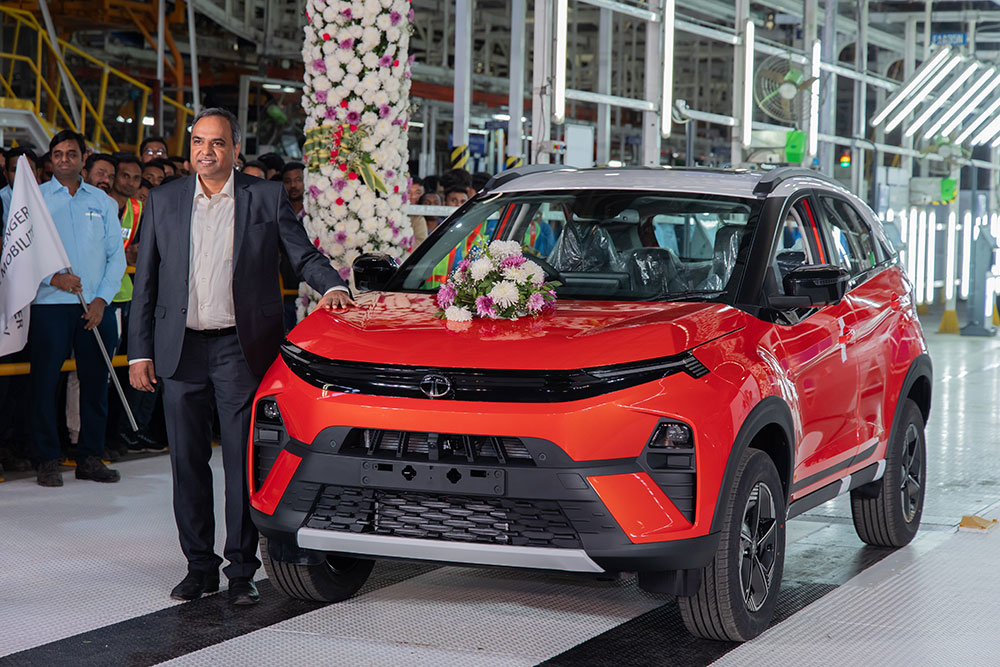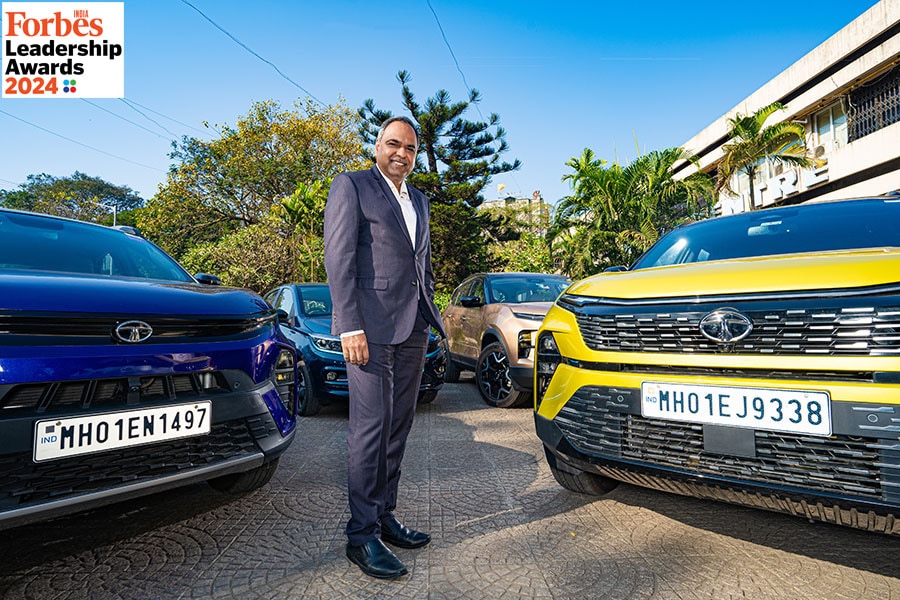SWOT Analysis of Tata Motors: A Comprehensive Examination
Tata Motors is one of India’s leading automobile manufacturers and has made a significant impact on the global automotive industry with its strong presence in the commercial vehicle, passenger car, and electric vehicle (EV) segments. As part of the renowned Tata Group, the company has been a major force in driving India’s automotive advancements while expanding its global reach. In this detailed SWOT analysis, we will explore Tata Motors' strengths, weaknesses, opportunities, and threats to offer insights into its current market position and future outlook.
Strengths:
Diverse Product Portfolio
Tata Motors boasts a wide range of vehicles that cater to multiple market segments, including commercial vehicles (CVs), passenger vehicles (PVs), and electric vehicles (EVs). Its commercial vehicle division is particularly strong, leading the Indian market and enjoying a solid global presence. On the passenger vehicle side, Tata has launched successful models like the Tata Nexon, Tiago, Harrier, and Altroz, which have resonated well with Indian consumers.
Strong Brand Recognition and Trust
Tata is a name synonymous with trust, reliability, and strong values in India. This brand equity translates into higher consumer confidence across Tata Motors' product lines. Its commitment to safety and its five-star Global NCAP ratings for models like the Tata Nexon and Altroz have further enhanced the brand’s reputation for prioritizing consumer safety, which has set it apart from competitors.
Pioneering in the Electric Vehicle Segment
Tata Motors has emerged as a leader in the Indian electric vehicle market with its electric models such as the Tata Nexon EV and Tigor EV. The company’s investment in electric mobility, coupled with Tata Group’s synergy across power (Tata Power), battery manufacturing (Tata Chemicals), and charging infrastructure (Tata Power), positions Tata Motors as a pioneer in India’s transition towards green mobility.
Global Presence
Tata Motors has a strong international presence, particularly through its ownership of the British luxury brand Jaguar Land Rover (JLR). While the acquisition of JLR has had its challenges, it has allowed Tata Motors to expand its footprint in premium markets across Europe, North America, and China. Tata’s commercial vehicles are also well-regarded globally, contributing to its reputation as a multi-national automotive player.
Innovation in Design and Technology
Tata Motors has significantly improved its design language and technological offerings. The introduction of the Impact Design 2.0 philosophy has given Tata’s vehicles a fresh, modern look, and its cars are equipped with advanced infotainment systems, safety features, and driving assistance technologies. Collaborations with global technology firms and its own R&D efforts have helped the company improve product quality and innovation.
Weaknesses:
Struggling Premium Brand (Jaguar Land Rover)
While Jaguar Land Rover has provided Tata Motors with access to luxury car markets, JLR has faced challenges over the years, including declining sales in key markets like China, Brexit-related disruptions, and the global semiconductor shortage. The high operational costs associated with JLR also strain Tata Motors' overall profitability. Despite efforts to turn the brand around, JLR’s performance continues to be a concern.
Perceived High Maintenance Costs
While Tata Motors has gained traction in the Indian market, one common criticism is the perception of high maintenance and after-sales service costs, particularly compared to competitors like Maruti Suzuki. Some customers feel that Tata vehicles require more frequent maintenance or are costly to repair, which can deter price-sensitive buyers, especially in the lower segments of the market.
Limited Global Penetration in Passenger Vehicles
Although Tata Motors has a significant global presence in the commercial vehicle segment, its passenger vehicle offerings have struggled to achieve substantial market share outside of India. Unlike global brands such as Hyundai or Toyota, Tata's international expansion in the passenger vehicle segment has been slow. This limits the company’s ability to diversify its revenue streams in international markets.
Inconsistent Product Quality Perception
While Tata Motors has made significant strides in improving vehicle design and quality, the perception of inconsistent product quality still lingers among some segments of buyers. Historical issues with durability and refinement affect the brand’s image in certain markets, particularly in the higher-end and premium vehicle segments.
Opportunities:
Growing Electric Vehicle Market
With the Indian government’s push toward electric mobility through initiatives like the FAME (Faster Adoption and Manufacturing of Hybrid and Electric Vehicles) scheme, Tata Motors is well-positioned to capitalize on the growing demand for EVs. Expanding its EV portfolio and increasing production capacity could help Tata capture a significant share of this emerging market. The success of the Nexon EV and Tigor EV highlights the brand’s potential to dominate this segment.
Global Expansion in Emerging Markets
While Tata Motors' global presence is strong in commercial vehicles, the passenger vehicle market presents new growth opportunities, particularly in emerging economies such as Southeast Asia, Africa, and Latin America. The company can leverage its expertise in producing affordable, rugged vehicles suited for these regions. Expanding its reach into international markets can also reduce its overdependence on the Indian market.
Focus on Safety and Innovation
Consumers are increasingly prioritizing vehicle safety, and Tata Motors has made significant strides in this area. The company can further differentiate itself from competitors by continuing to focus on safety features, crash test ratings, and building consumer trust around durability and robustness. Tata’s growing reputation for offering cars with best-in-class safety ratings gives it a strong competitive edge.
Collaboration and Synergy within the Tata Group
Tata Motors can leverage synergies across various Tata Group companies to enhance its offerings. Collaboration with Tata Power for charging infrastructure, Tata Chemicals for EV batteries, and Tata Consultancy Services (TCS) for AI, cloud computing, and connected car technologies can help Tata Motors create an ecosystem that benefits from the vast resources within the Tata Group.
Threats:
Intense Competition in the Indian Market
The Indian automobile market is highly competitive, with strong players such as Maruti Suzuki, Hyundai, Mahindra, and foreign entrants like Kia and MG Motors. These competitors offer a mix of affordable, feature-packed vehicles, and aggressive marketing strategies that could impact Tata Motors’ market share. The introduction of new models by competitors, especially in the SUV and electric vehicle segments, poses a challenge.
Supply Chain Disruptions and Rising Costs
Global supply chain disruptions, such as the semiconductor shortage, have affected Tata Motors' production capabilities, particularly in its JLR division. Additionally, rising input costs due to inflation, raw material shortages, and global trade uncertainties could further pressure profit margins and disrupt operations.
Regulatory Changes and Environmental Norms
With stringent emissions norms, like BS-VI standards, and the growing focus on reducing carbon footprints, Tata Motors will need to continually upgrade its technology and adapt to regulatory changes. Failure to comply with evolving environmental standards could result in penalties and loss of market share. Moreover, the increasing push for sustainable practices means Tata must continue to invest heavily in R&D for electric and hybrid technologies.
Economic Fluctuations
Tata Motors’ core markets, including India, are subject to economic fluctuations, which can impact consumer purchasing power. Rising fuel prices, inflation, and interest rates can make cars less affordable, leading to reduced demand for new vehicles. The company is particularly vulnerable to such fluctuations in the price-sensitive Indian market.
Conclusion:
Tata Motors has made impressive strides in recent years, with notable advancements in electric mobility, safety standards, and vehicle design. The company’s strong brand equity and leadership in the Indian market, particularly in commercial vehicles and EVs, provide a solid foundation for future growth. However, challenges such as the performance of Jaguar Land Rover, intense competition, and regulatory pressures require Tata Motors to stay agile and innovative. By capitalizing on its strengths and addressing its weaknesses, Tata Motors can continue to be a leading player in both domestic and global markets.








No comments: